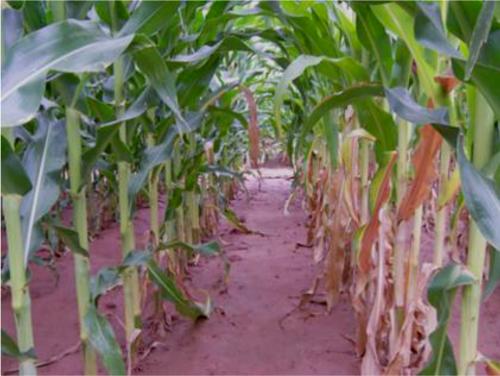Early firing is a nitrogen deficiency symptom in corn. Growers wishing to check the effectiveness of their nitrogen practices may perform the end-of-season cornstalk nitrate test.

Photo 1. Typical N deficiency symptoms in corn.
When nitrogen (N) deficiencies occur early and mid-season, corn leaves on the lower part of the plant begin to turn yellow prematurely starting from the leaf tip and progressing towards the stalk (Photo 1). Lower leaves will be affected first as N is mobile and will be reallocated to the upper leaves. The yellow color will turn brown followed by death of lower leaves, leading to a condition known as firing (Photo 2).
With above normal rain throughout the 2014 season, some corn growers are noticing early firing and wondering if their N fertilizer practices were adequate this year. Sandier ground that received all or most of the N before or at-planting shows the highest tendency to early firing. Other conditions such as high N leaching and denitrification rates, compacted soils, and low heat unit accumulation favor early firing.

Photo 2. Normal corn (left) compared to early firing (right).
The nitrate nitrogen concentration in the lower portion of the corn stalk just after the black layer formation in the grain is a good indicator of the N status of the crop. As corn approaches maturity, plants stressed for N will move nitrate from the lower cornstalk to the ear, resulting in a low stalk nitrate concentration. When corn plants have more than sufficient N for maximum yield, nitrate N accumulates in the stalk.
The end-of-season cornstalk nitrate test is a useful diagnostic tool to assess N adequacy and overall N management (Photo 3). The methodology and interpretation of this test were discussed in some detail in “End of season corn stalk nitrate test.”